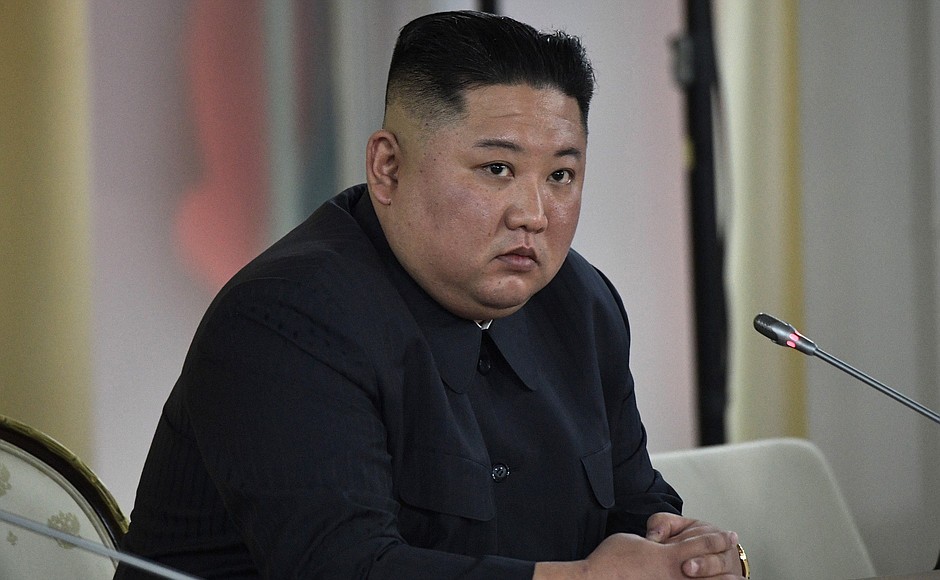The Peninsula
The Report on the 5th Plenary Meeting of the 7th Central Committee Part 1: The Belated Christmas Gift
Published January 6, 2020
Category: North Korea

By Stephan Haggard
In lieu of a New Year’s speech, Kim Jong -un convened an unusual plenum of the Central Committee in December, issuing a widely-distributed Report on the meeting in its stead. What was said—and what it augurs for 2020—are considered in two parts: the bargaining with the United States, which has gotten most attention, and the economic messages—taken up tomorrow–which are equally if not more important.
The Plenums of the last two years—which appear to be augmented with personnel well beyond the Central Committee narrowly conceived–have been consequential. The April 2018 party plenary came at the beginning of the summit era, and carried a message—however equivocal—of a willingness to talk. The April 2019 plenum, by contrast, followed on the failure in Hanoi and was decidedly darker in tone. It set in train the sustained limbo—broken briefly by the handshake at the border and the Stockholm meetings–that characterized U.S.-DPRK relations for most of 2019.
Plenums are designed to outline broad policy lines that pertain to both external and internal affairs. There can be little doubt, however—given the year-end deadline given by Kim Jong-un for progress on negotiations with the U.S.—that this one was sending a foreign policy message. See it as the “Christmas gift” that Vice Minister of Foreign Affairs Ri Tae Song promised in early December.
Coming early in the work report is a long passage on the technological advances made in the country’s weapons programs, an admission—were one needed—that the regime has not been standing still. In addition to the 19 short-range missile tests, tests the Trump administration has largely shrugged off, other development activities have clearly not abated. The core message: time is not in fact on the side of the United States.
What capabilities, exactly? Two are of most central strategic significance. The first is reflected in the highly public engine test at the Sohae Satellite Launching Ground, a facility that Trump personally claimed Kim Jong-un had promised to destroy. The test is a reminder that the regime has multiple programs aimed at a credible inter-continental capability, and these have continued despite the self-declared moratorium on long-range missile tests.
The second message is that the regime remains set on securing a second-strike capability, and thus a more assured deterrent against any possible U.S. military action (however low a probability it may seem to us). The report makes mention of the fact that the U.S. maintains a preventive option, claiming disingenuously that the U.S. sees North Korea as a “target of its preemptive nuclear strike.” This capability has been signaled through tests showing more competence with solid fuel rocketry, a long-standing objective. Solid-fuel shortens launch times, and thus increases mobility. A submarine-launched capability serves the same purpose; tests related to such a capability were undertaken just in advance of Stockholm. Even if it would seem that an SLBM capability was pretty far off, we have made that miscalculation about North Korean engineering capabilities before.
The report’s analysis of the current state of diplomatic play is virtually a mirror image of the analysis of North Korean behavior in the U.S.: that North Korean dickering is simply a pretext for developing capabilities that will get harder and harder to shut down. The North Korean interpretation, by contrast, is that the U.S. is playing the same game, “wasting time away under the signboard of dialogue and negotiations,” while at the same time keeping the sanctions regime in place.
The United States has downsized, downplayed and even canceled exercises. This has not been enough for Pyongyang, which continues to treat any drills and the shipment of “ultra-modern warfare equipment” as signs of bad faith. Yet it is also noteworthy that the report makes particular mention of the “more than ten independent sanctions measures” the U.S. has undertaken outside of the UNSC framework, a reference to secondary sanctions Treasury has imposed to reduce leakage.
The report boasts that “the world will witness a new strategic weapon to be possessed by the DPRK in the near future”; I leave speculation on what that might be to others, but given the multiple missile programs the regime is juggling simultaneously, Pyongyang’s options are surprisingly wide. The result is that bargaining is about to shift from the conference table (such as it was) to an end to the moratorium, a resumption of testing and whatever conciliatory or escalatory measures the Trump administration chooses to make.
Despite these threats, the report also leaves open a diplomatic crack. While the regime will “reliably put on constant alert the powerful nuclear deterrent capable of containing the nuclear threats from the U.S.,” it also notes that “the scope and depth of bolstering our deterrent will be properly coordinated depending on the U.S. future attitude to the DPRK.” Military threats are never distinct from diplomatic objectives; they are a complement to them. The objective: to force concessions from the United States as a precondition for a resumption of talks at any level.
To assess North Korea’s bargaining position, however, we need to consider the economic landscape. That landscape necessarily takes us into where China stands on the current state-of-play; I address that issue tomorrow.
Stephan Haggard is the Lawrence and Sallye Krause Professor of Korea-Pacific Studies, Director of the Korea-Pacific Program and distinguished professor of political science at the University of California – San Diego. The views expressed here are the author’s alone.
Photo from the Kremlin’s website.
